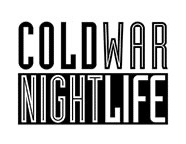[vc_row][vc_column][vc_column_text] Before you break the plastic seal around Electronic Improvisations Vol. 1, you are already back in the 1970s. The golden age of modular music saw sleeves that imparted important information about the sound and artist. They might have featured signposts in the form of waveforms or patches. The records were as often found in libraries than in shops, because they were clearly made by intellectuals who worked as engineers as much as musicians. The sleeves told a story of earnest modernity, just by their layout grid, but they also explained the method.
Before you break the plastic seal around Electronic Improvisations Vol. 1, you are already back in the 1970s. The golden age of modular music saw sleeves that imparted important information about the sound and artist. They might have featured signposts in the form of waveforms or patches. The records were as often found in libraries than in shops, because they were clearly made by intellectuals who worked as engineers as much as musicians. The sleeves told a story of earnest modernity, just by their layout grid, but they also explained the method.
So, here we have the first vinyl collection of modular improvisations by Gareth Jones and Daniel Miller. Working together as Sunroof, they have issued material online and contributed covers to compilations of Krautrock classics, but until now they have held back from releasing an album. That it comes packaged as a delayed message from 1976 only makes things more interesting.
Both artists took significant steps as the 1970s ran out: Miller with The Normal’s “TVOD/Warm Leatherette” single, and Jones as the engineer on John Foxx’s immortal Metamatic. They were brought together by Foxx, who suggested Jones to work with Depeche Mode, and formed a working and personal relationship that has outlived the Cold War, Britpop and the fax machine.
Miller, of course, turned his hobby release into one of the mightiest independent record labels, Mute. Jones built a career producing and engineering many of the label’s acts, before settling into a remixing role. They worked in close quarters in the studio, particularly for Depeche Mode’s Hansa recordings, but also applied their skills together for The House of Love. They came together as Sunroof to remake “Hero” by Neu! and “Oh Yeah” by Can, as well as to remix Goldfrapp and To Rococo Rot.
The revival of interest in modular synthesis captured the imaginations of both men. As new manufacturers created tools for those who dream of wires, they filled a black hole with money to create novel configurations. Their shared love of circuitry led them from occasional noodling to a programme of recordings made in a spirit of free experimentation; subject to self-imposed limitations on time, interaction and channels. Electronic Improvisations Vol. 1 is, therefore, less Stockhausen than AMM; an album in the English tradition described by Cornelius Cardew in Towards an Ethic of Improvisation:
We are searching for sounds and for the responses that attach to them, rather than thinking them up, preparing them and producing them. The search is conducted in the medium of sound and the musician himself is at the heart of the experiment.
One of the features of modular synths is that they have their own character and are capable of producing unexpected sounds. Musicians working with traditional instruments have more control over the results, and their technical ability is a key to the manipulation of sound. Modular synths have flexible signal paths that can escape the grasp of even the most skilled operator. The sounds that come through the speakers might be heard for the first time and never be recreated again. They are the ephemera of electricity.
Good for us, then, that Sunroof pressed record on their sessions. As a result, we find within the old school sleeve a set of recordings that explore the interactions of waveforms over the course of eight tracks. With an emphasis on curiosity over composition, the results are less Jarre than Eno: in places, sounding like incoming signals at Jodrell Bank; in others, the visceral hum of subatomic particles; and then Brion Gysin’s Moroccan memories absorbed by an IBM mainframe. The pieces are surprising and playful, and they succeed most when the duo play with resonances. You can’t dance to them, but you will have fun trying.
(Main photo: Diane Zillmer)
[/vc_column_text][/vc_column][/vc_row]

